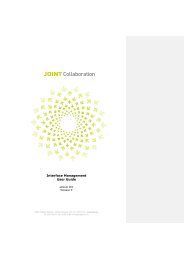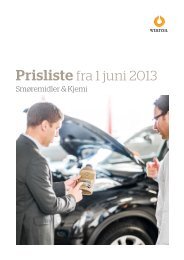Ida Ekblad MarIus Engh anawana haloba lars lauMann - Statoil
Ida Ekblad MarIus Engh anawana haloba lars lauMann - Statoil
Ida Ekblad MarIus Engh anawana haloba lars lauMann - Statoil
Create successful ePaper yourself
Turn your PDF publications into a flip-book with our unique Google optimized e-Paper software.
Arts in Oslo. She notes that at the time she felt a clear split of<br />
self – from perceiving herself as a twenty-one-year-old located<br />
within a vibrant time of her life, to an experience of the other,<br />
distanced self who enters into the architectural regiment of<br />
student housing to encounter an environment of isolation and<br />
suffer the feeling of a loss of community.<br />
“As a foreigner, I had a very heightened physical sense of<br />
exclusion and in that sense, my life assumed a particular track of<br />
exile,” Haloba explained. As a consequence, the artist manifested<br />
this sense of exile by casting her body and hands in plaster and<br />
installing the empty casts as ciphers of alienation. “I have always<br />
worked with hands and arms,” she offers, “as a way to express my<br />
own thinking – understanding hand gestures as more layered in<br />
meaning than facial gestures, and invested in the understanding<br />
that hands open out of a very private narrative into one about<br />
sharing and inclusion.”<br />
The cathartic and performative nature of Haloba’s individual<br />
works is rooted in the artist’s earlier performances, realised<br />
when she was still part of a collective with eight other artists<br />
in Lusaka. Framed as a single evening of events, the individual<br />
performances were staged in various public spaces throughout<br />
the city in an attempt to engage with the subjective responses<br />
of the individual viewer or city dweller. Haloba, who was<br />
originally educated within the sciences, choreographed her<br />
performances to both reflect upon and explore the neurological<br />
stimulus between the artist and the viewer. It was at this time<br />
that Haloba first realised the “salt-licked maps” that were later<br />
102<br />
documented on video. The performance involves the artist<br />
kneeling down and ritualistically manoeuvring throughout<br />
the salt-covered floor’s surface, drawing out imaginary maps<br />
with her tongue. The tongue operates on some visceral level<br />
to communicate the discomfort associated with this act while<br />
audibly transposing the psychoacoustics associated with this<br />
discomfort. At the same time, the tongue operates as a device<br />
of demystification with respect to the more historical reality<br />
– the scramble for Africa when the continent was randomly<br />
divided by the colonialists.<br />
Haloba’s early performances in Lusaka did not draw on the<br />
traditions of the dérive or the psycho-geography prevalent<br />
within the practices of the Situationists in France during the<br />
1960s. Rather, the collective’s performance referenced an<br />
anthropological and a metaphorical uprooting of a complicated<br />
history of partition prevalent throughout Africa. Although<br />
not directly referential, Haloba investigates the possible<br />
consciousness of a lost and broken community on a more<br />
abstract level to communicate the experience of internal<br />
exile. Within internal exile, identity may be reconceived of<br />
retrospectively through the past or it may be reconstructed<br />
according to past images and past experiences for the sake of<br />
an ideal future. Haloba uses both these approaches and, in doing<br />
so, finds it necessary to infuse the more abstract discussions<br />
with a recuperation of the real history. As a student of the<br />
National Academy of Fine Arts in Oslo from 2004–2006,<br />
Haloba, together with fellow students from Colombia, Namibia

















